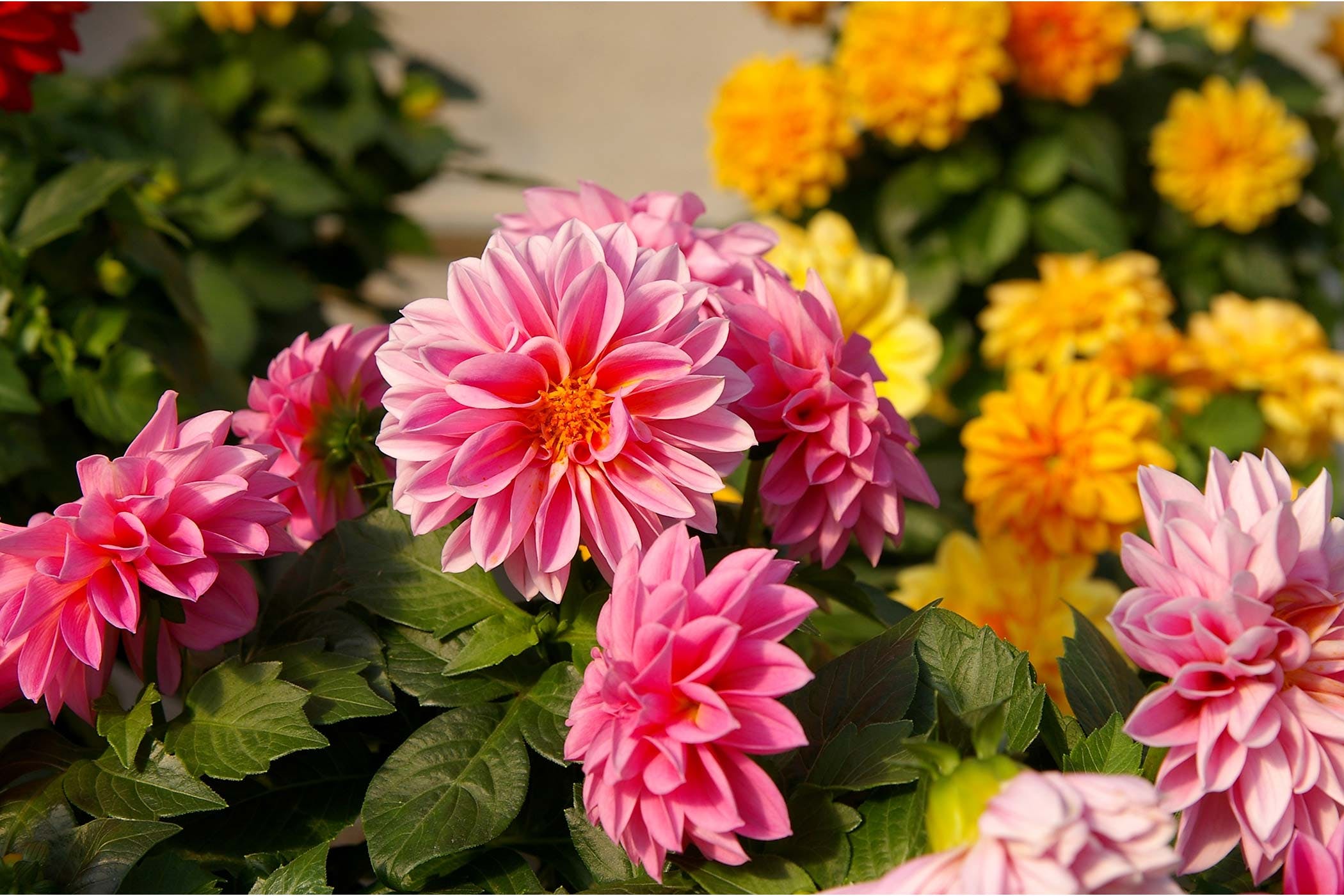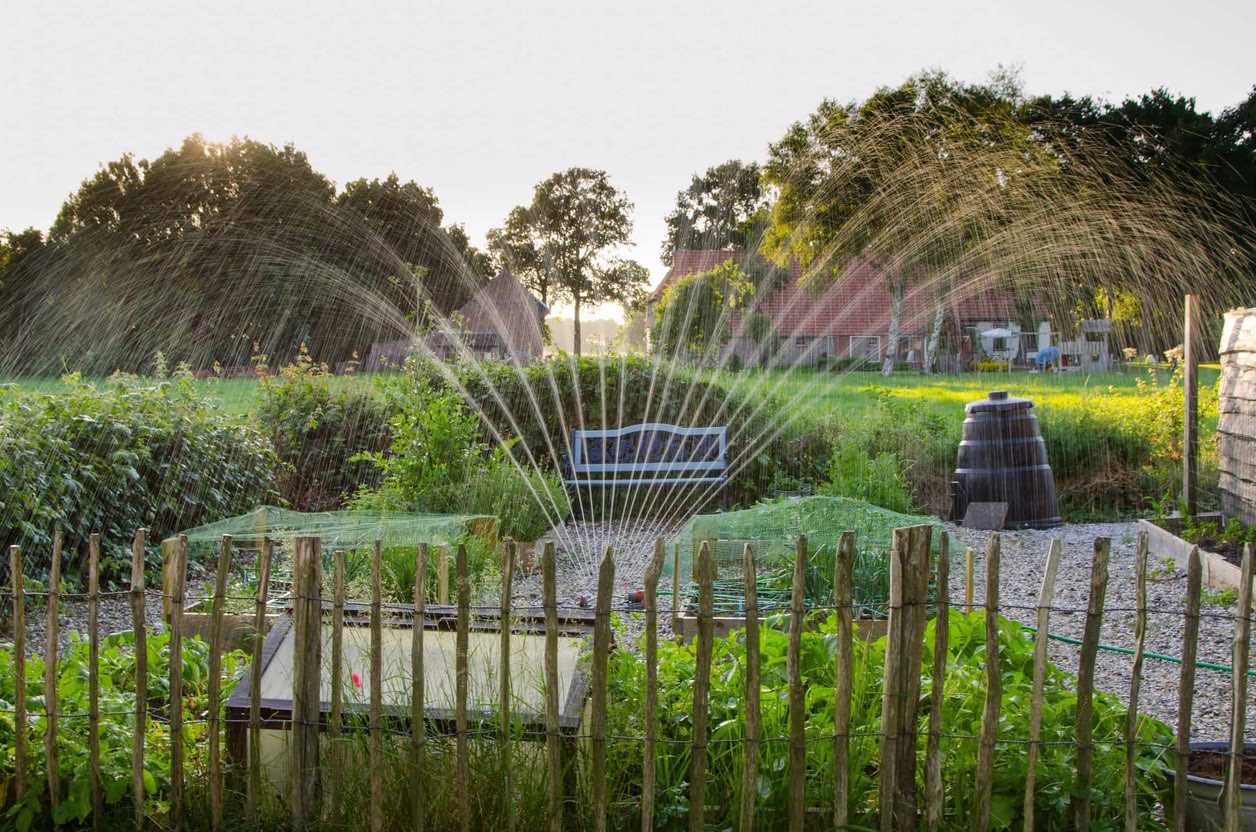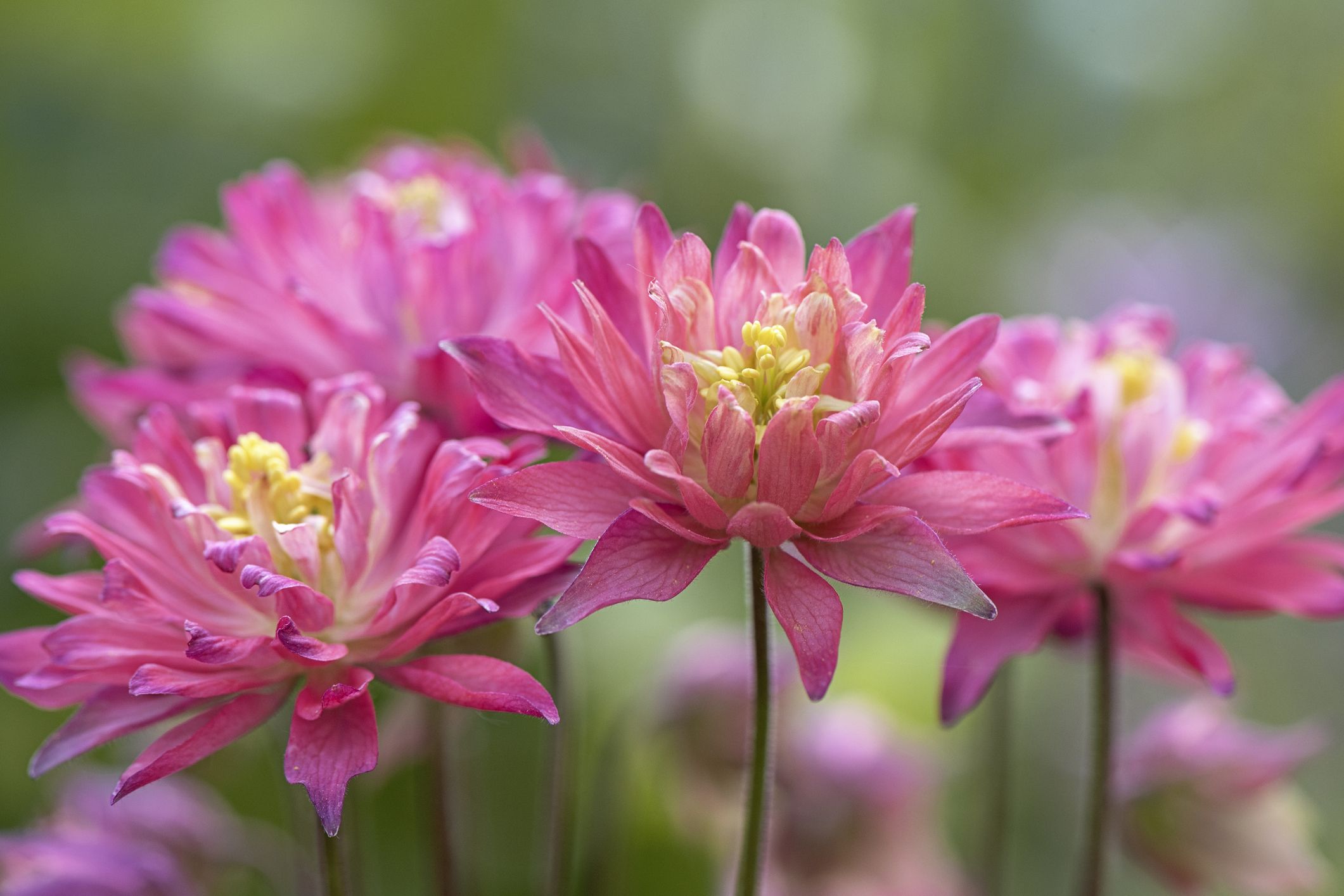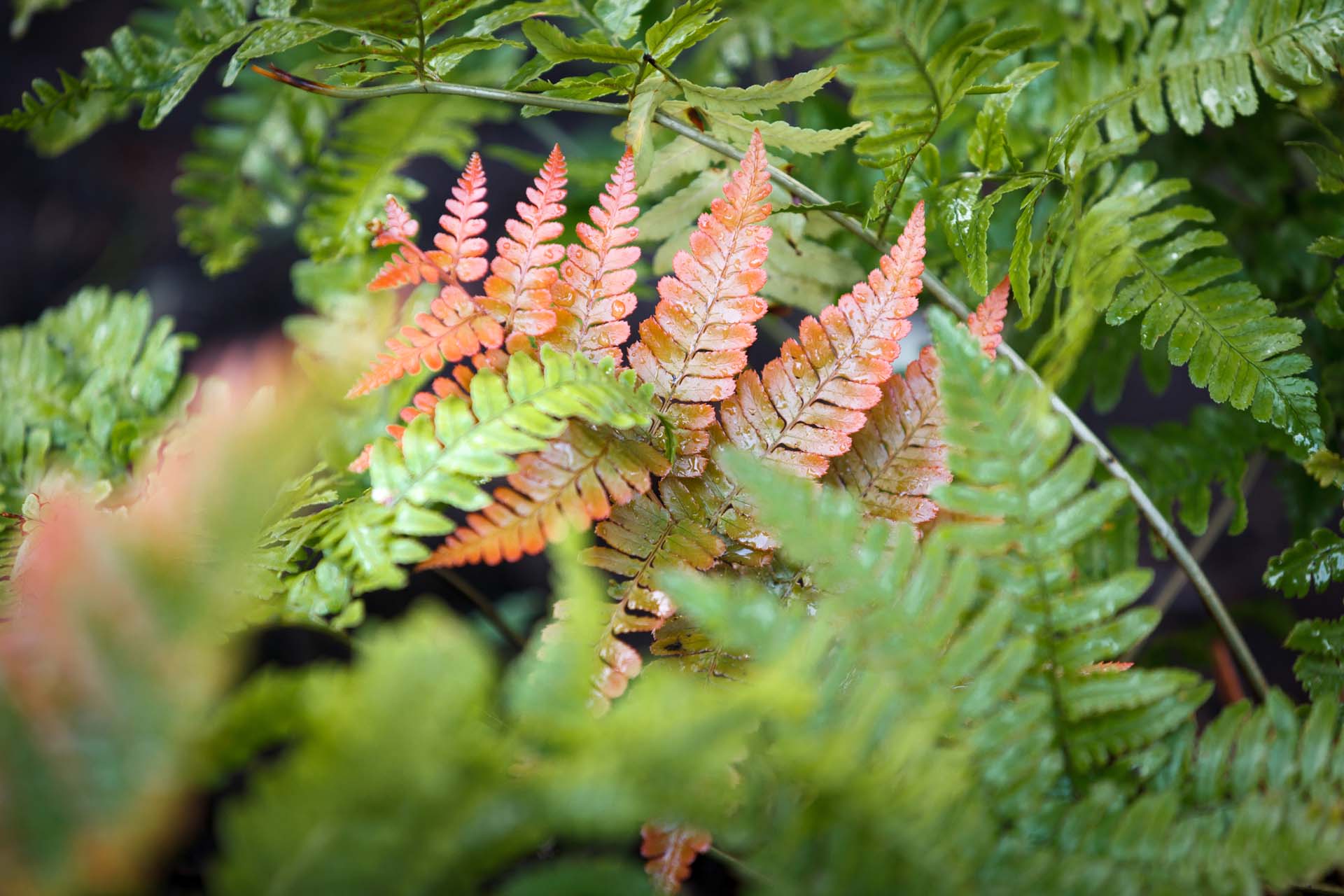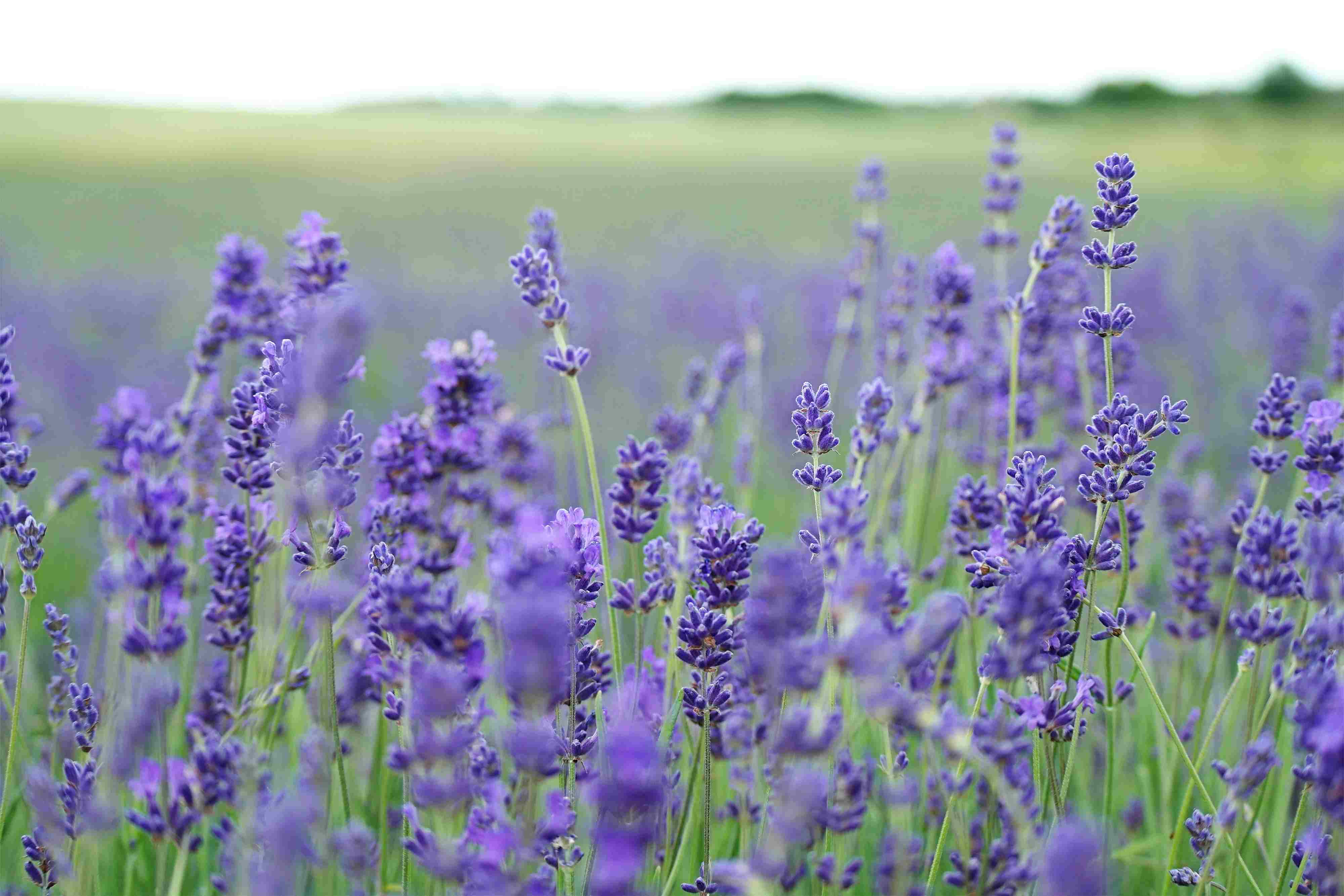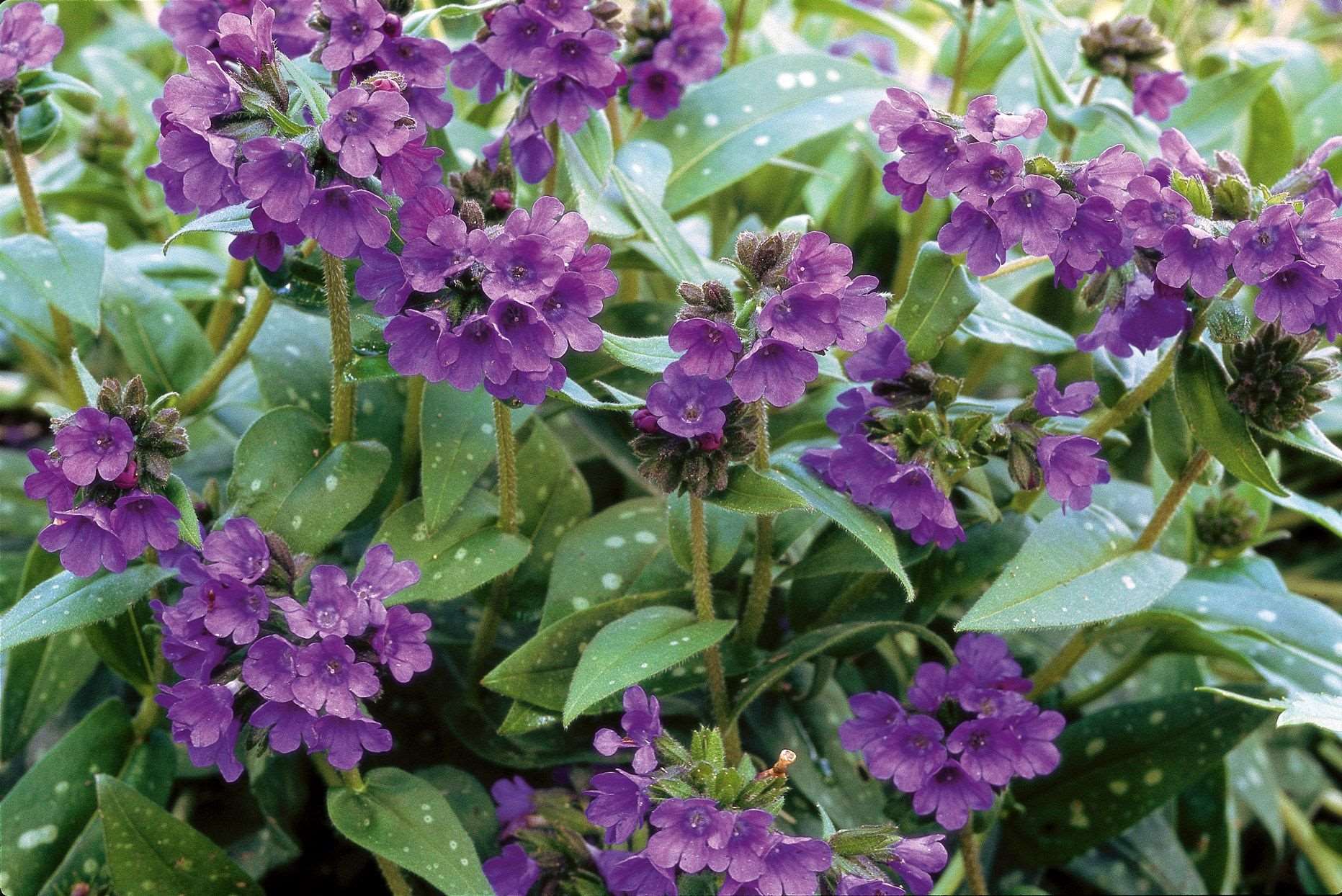Home>Types of Gardening>Ornamental Gardening>What Are Some Hardy Perennials
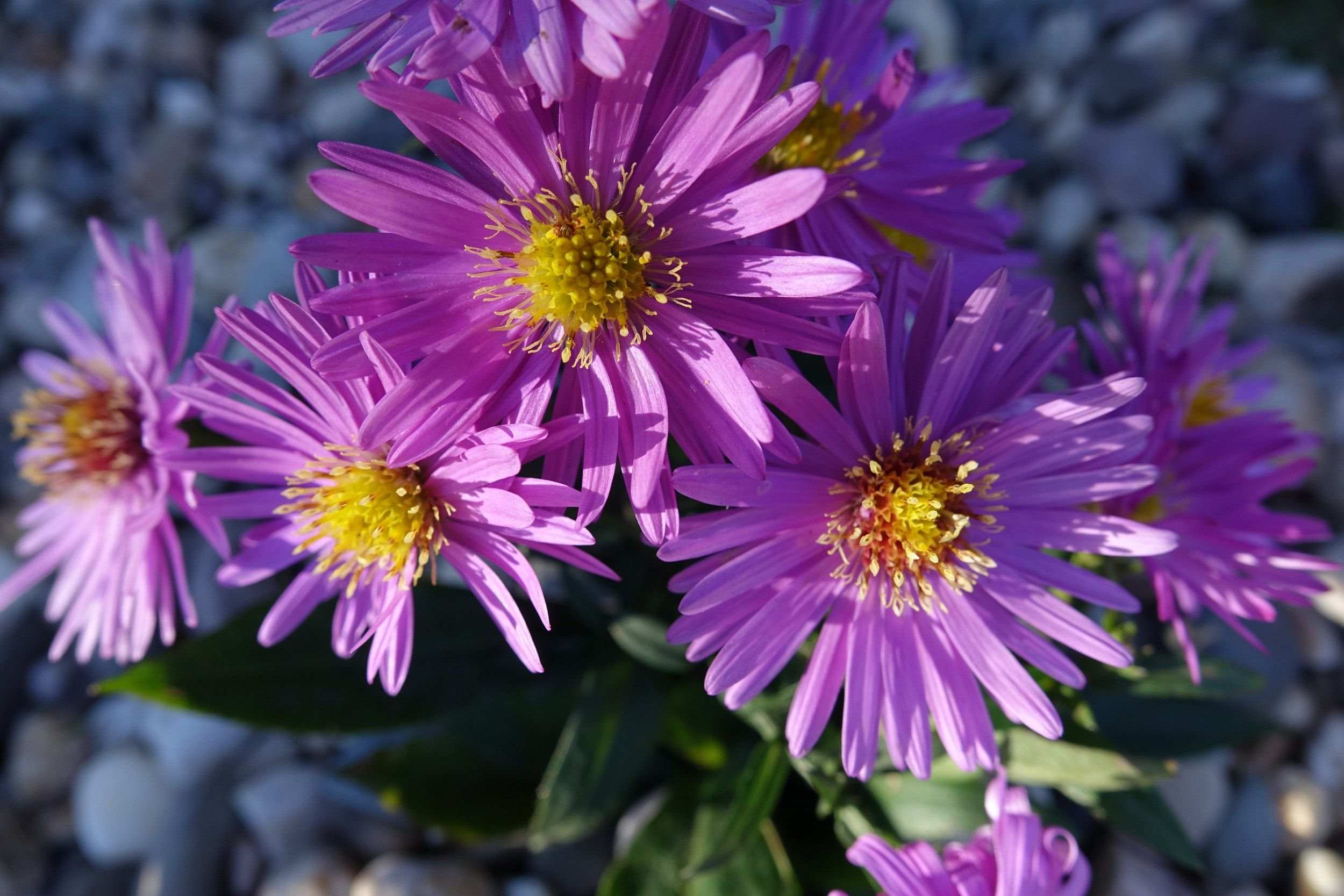

Ornamental Gardening
What Are Some Hardy Perennials
Modified: January 22, 2024
Discover a variety of hardy perennial plants for your ornamental gardening needs. Explore our selection and find the perfect additions to your garden.
(Many of the links in this article redirect to a specific reviewed product. Your purchase of these products through affiliate links helps to generate commission for Chicagolandgardening.com, at no extra cost. Learn more)
Table of Contents
- Introduction
- Benefits of Growing Hardy Perennials
- Factors to Consider When Choosing Hardy Perennials
- Top 10 Hardy Perennials for Various Climate Zones
- How to Plant and Care for Hardy Perennials
- Common Problems and Solutions for Hardy Perennials
- Tips for Successful Propagation of Hardy Perennials
- Conclusion
Introduction
Welcome to the wonderful world of ornamental gardening! If you are a fan of beautiful, vibrant, and long-lasting plants, then growing hardy perennials is the perfect choice for you. Hardy perennials are a staple in ornamental gardens due to their ability to withstand harsh weather conditions, adaptability to various soil types, and their ability to return year after year with minimal effort.
Hardy perennials are plants that live for more than two years, and they are known for their ability to survive cold winters and hot summers. Unlike annuals that need to be replanted each year, hardy perennials provide a solid foundation and structure to your garden, becoming the backbone of your landscape design.
Whether you are a beginner gardener or have years of experience under your belt, growing hardy perennials offers numerous benefits. Not only do they add color and beauty to your garden, but they also attract beneficial pollinators like butterflies and bees. Additionally, they require less maintenance compared to other types of plants and can withstand periods of drought.
With a wide variety of options available, you can choose from a range of colors, sizes, and bloom times to create a garden that suits your personal preferences and climate zone. From graceful daylilies and vibrant coneflowers to fragrant lavender and elegant roses, the possibilities are endless when it comes to incorporating hardy perennials into your garden.
In this article, we will explore the benefits of growing hardy perennials, factors to consider when choosing the right plants for your garden, the top 10 hardy perennials for various climate zones, planting and care tips, common problems and solutions, as well as tips for successful propagation. So, let’s dive in and discover the joy of growing these beautiful and resilient plants in your ornamental garden!
Benefits of Growing Hardy Perennials
Growing hardy perennials in your garden offers a multitude of benefits that make them an excellent choice for ornamental gardening. Here are some key advantages of incorporating hardy perennials into your landscape:
- Longevity: Hardy perennials live for more than two years, providing a permanent and enduring presence in your garden. Unlike annuals that need to be replanted each year, these plants establish deep root systems, allowing them to return year after year with less effort on your part.
- Adaptability: Hardy perennials are known for their adaptability to various soil types, making them suitable for a wide range of garden environments. Whether your soil is sandy, clayey, or loamy, there are hardy perennials that can thrive and add beauty to your landscape.
- Weather Resistance: Hardy perennials are designed to withstand the challenges of changing seasons. They can endure harsh winter conditions, including freezing temperatures and heavy snow, as well as the heat and drought of summer. This resilience ensures that your garden remains vibrant and colorful throughout the year.
- Low Maintenance: Once established, hardy perennials require minimal maintenance compared to other types of plants. They are generally more resistant to pests and diseases and have fewer watering needs. This makes them an ideal choice for gardeners who prefer a low-maintenance landscape without compromising on beauty and variety.
- Attract Beneficial Wildlife: Hardy perennials are magnets for beneficial pollinators such as butterflies, bees, and hummingbirds. These plants provide nectar, pollen, and shelter, creating a welcoming habitat that supports biodiversity in your garden. By cultivating hardy perennials, you contribute to the conservation of pollinators and the overall health of the ecosystem.
Furthermore, hardy perennials come in a wide array of colors, sizes, textures, and bloom times, allowing you to create a garden that reflects your personal style and preferences. Whether you prefer the soft pastels of spring-flowering perennials or the vibrant hues of summer bloomers, there is a hardy perennial for every season.
By incorporating hardy perennials into your landscape, you not only enhance the visual appeal and diversity of your garden but also enjoy the long-term beauty and benefits that these resilient plants provide. So, roll up your sleeves and embark on a journey of gardening with hardy perennials – your garden will thank you for it!
Factors to Consider When Choosing Hardy Perennials
When it comes to selecting the right hardy perennials for your garden, there are several factors that you need to consider. By taking these factors into account, you can ensure that you choose plants that will thrive in your specific garden environment. Here are some key considerations to keep in mind:
- Climate: The climate in your region plays a crucial role in determining the types of hardy perennials that will flourish. Consider the average temperatures, rainfall, humidity levels, and frost dates of your area. Some perennials are more suitable for cold climates, while others thrive in warm and tropical regions. Make sure to select plants that are well-suited to your climate zone.
- Soil Type: Different hardy perennials have specific soil preferences. It’s important to know the type of soil in your garden, such as sandy, clayey, or loamy, and choose plants that are adapted to those conditions. If necessary, you can amend the soil to improve its drainage or fertility to create an optimal growing environment for your selected perennials.
- Sunlight Exposure: Most hardy perennials require a certain amount of sunlight to thrive. Evaluate the sun exposure in your garden, including the hours of direct sunlight and any shade patterns caused by buildings, trees, or other structures. Some plants prefer full sun, while others can tolerate partial shade. Select perennials that match the sunlight conditions of your garden.
- Watering Needs: Consider the water requirements of the hardy perennials you are interested in. Some plants are drought-tolerant and can withstand periods of limited water availability, while others require regular watering. Keep in mind the natural precipitation patterns in your region and choose perennials that are well-suited to your garden’s water availability.
- Height and Spread: Determine the height and spread that you desire for your garden. Some hardy perennials are low-growing and compact, making them suitable for borders and containers, while others are tall and make excellent focal points or backdrops. Take into account the available space in your garden and plan accordingly to ensure proper spacing between plants.
- Bloom Time: Consider the bloom time of the hardy perennials you are considering. Some plants bloom in spring, while others flower in summer or fall. By selecting a variety of perennials that bloom at different times, you can create a continuous display of color and interest throughout the growing season.
By considering these factors, you can choose hardy perennials that are best suited to your specific garden conditions. Remember to also take into account your personal preferences in terms of colors, textures, and fragrance to create a garden that is both visually appealing and tailored to your tastes. Happy selecting!
Top 10 Hardy Perennials for Various Climate Zones
When it comes to selecting hardy perennials for your garden, it is vital to choose plants that are well-suited to your specific climate zone. Here are ten popular hardy perennials that are known for their ability to thrive in different climate zones:
- Black-eyed Susan (Rudbeckia hirta): This resilient perennial is native to North America and is known for its bright yellow or orange flowers with dark centers. It is perfect for hot and dry climates and can tolerate a wide range of soil conditions.
- Shasta Daisy (Leucanthemum x superbum): This classic perennial features large white daisy-like flowers with golden centers. It is a versatile plant that can thrive in both hot and cold climates, making it suitable for a wide range of gardeners.
- Siberian Iris (Iris sibirica): With its elegant, iris-like flowers in shades of blue, purple, or white, the Siberian Iris is a hardy perennial that is perfect for cooler climate zones. It prefers moist soil and can tolerate partial shade.
- Daylily (Hemerocallis spp.): Known for its vibrant and showy flowers that come in a wide range of colors, daylilies are extremely adaptable and can thrive in various climate zones. They also have a long blooming season, providing continuous color throughout the summer.
- Lavender (Lavandula spp.): This fragrant perennial is a favorite among gardeners and is well-suited to warmer and drier climates. Lavender requires well-draining soil and plenty of sunlight to thrive.
- Peony (Paeonia spp.): Peonies are beloved for their large, fragrant, and elegant flowers that come in shades of pink, white, and red. These hardy perennials can withstand colder climates and require a period of cold dormancy to bloom successfully.
- Salvia (Salvia spp.): With their vibrant spikes of flowers, salvias are an excellent choice for both hot and cold climate zones. They are drought-tolerant and attract pollinators such as bees and butterflies.
- Hosta (Hosta spp.): Hostas are shade-loving perennials that thrive in cooler climates. They are prized for their large and decorative foliage and are perfect for adding texture and beauty to shady areas of the garden.
- Blanket Flower (Gaillardia spp.): This sun-loving perennial features bright and colorful flowers in shades of red, yellow, and orange. It is highly tolerant of heat and drought, making it a great choice for arid climates.
- Rose (Rosa spp.): Roses are classic and timeless perennials that can thrive in a wide range of climate zones. There are varieties available to suit both warm and cold climates, and they offer a wide array of colors, fragrances, and growth habits.
Remember to check the specific cultivar of each plant to ensure that it is recommended for your particular climate zone. By choosing hardy perennials that are well-adapted to your climate, you can create a beautiful and thriving garden that brings you joy year after year.
How to Plant and Care for Hardy Perennials
Planting and caring for hardy perennials is relatively straightforward, but it’s important to follow some basic guidelines to ensure their successful establishment and long-term health. Here are the key steps to plant and care for hardy perennials:
- Choose the Right Location: Select a planting location that provides the appropriate sunlight, soil conditions, and moisture levels for the specific needs of the perennial. Consider factors such as soil drainage, exposure to wind, and proximity to other plants.
- Prepare the Soil: Loosen the soil in the planting area and remove any weeds or debris. Add organic matter, such as compost, to improve soil fertility and drainage if necessary.
- Dig the Planting Hole: Dig a hole that is slightly wider and deeper than the plant’s rootball. Gently loosen the roots before placing the perennial in the hole.
- Plant at the Right Depth: Position the perennial in the hole so that the top of the rootball is level with or slightly above the surrounding soil. Backfill the hole with soil, gently firming it around the roots.
- Water Thoroughly: After planting, thoroughly water the perennial to settle the soil and ensure good root-to-soil contact. Continue to water regularly during the first few weeks to help the plant establish a strong root system.
- Mulch: Apply a layer of organic mulch, such as wood chips or bark, around the base of the plant. Mulch helps to conserve moisture, suppress weeds, and regulate soil temperature.
- Watering: Provide consistent watering for the first growing season, especially during dry periods. Deep watering is preferable to frequent shallow watering, as it encourages the development of deep roots.
- Fertilization: Most hardy perennials benefit from an annual application of balanced slow-release fertilizer in early spring. Follow the recommended dosage on the fertilizer package to avoid overfeeding.
- Pruning: Regular pruning helps to maintain the shape and health of hardy perennials. Remove dead or faded flowers and trim back any overgrown or damaged stems. Some perennials may require pruning in late fall or early spring to rejuvenate growth.
- Division: Over time, some hardy perennials may become overcrowded and benefit from division. Divide the clumps in early spring or fall, ensuring each division has sufficient roots. Replant the divisions in fresh soil.
Proper care and maintenance are essential for the long-term success of hardy perennials. By following these guidelines, you can create a thriving garden that showcases the beauty and resilience of these remarkable plants.
Common Problems and Solutions for Hardy Perennials
While hardy perennials are generally sturdy and resilient, they can still encounter some common issues. By being aware of these problems and knowing how to address them, you can ensure the health and vitality of your garden. Here are some common problems that you may encounter with hardy perennials and their potential solutions:
- Pest Infestation: Pests such as aphids, slugs, and snails can damage the foliage and flowers of your perennials. Use organic pest control methods like handpicking, introducing beneficial insects, or using natural insecticidal soaps. Regularly inspect your plants to catch infestations early.
- Disease: Fungal diseases like powdery mildew and leaf spot can affect the overall health of your perennials. Improve air circulation by proper plant spacing and avoid overwatering. Remove and destroy any infected plant parts and use fungicides if necessary.
- Overwatering: Excessive watering can lead to root rot and other issues. Ensure that your perennials have well-draining soil and water them only when the top inch of soil feels dry. Adjust watering frequency based on weather conditions.
- Underwatering: Insufficient watering can stress your perennials and lead to wilting and stunted growth. Monitor soil moisture levels and water deeply when needed, particularly during dry spells or hot weather.
- Soil Issues: Poor soil quality, such as compacted soil or imbalanced nutrient levels, can hinder the growth of perennials. Amend the soil with organic matter to improve its structure, drainage, and fertility. Test the soil periodically to determine if any nutrients need to be adjusted.
- Improper Pruning: Incorrect pruning techniques can harm the growth and aesthetics of your perennials. Learn the appropriate pruning methods for each specific plant and time it correctly according to their growth habits. Avoid pruning late in the growing season, as it may stimulate new growth that is susceptible to frost damage.
- Weed Competition: Weeds can compete for nutrients, water, and sunlight, negatively impacting the growth of your perennials. Remove weeds regularly by hand or use mulch to suppress weed growth. Be careful not to damage the roots of your perennials when weeding.
- Winter Damage: Cold winter temperatures, frost, and freezing winds can damage or kill exposed perennial plants. Protect vulnerable perennials by covering them with mulch, straw, or frost blankets before the first frost. Move potted perennials indoors or to a more protected area.
- Improper Planting Depth: Planting perennials too deeply or too shallowly can affect their growth and overall health. Follow the planting instructions for each specific plant, ensuring that the rootball is placed at the correct depth. This allows for proper water and nutrient absorption.
- Lack of Sunlight: Insufficient sunlight can result in weak growth and reduced flowering. Ensure that your perennials receive the appropriate amount of sunlight based on their specific requirements. If necessary, relocate plants to sunnier areas of your garden.
By being proactive and addressing these common problems, you can maintain the health and vitality of your hardy perennials. Regular monitoring, proper care, and timely intervention will help ensure that your garden remains a thriving and beautiful space.
Tips for Successful Propagation of Hardy Perennials
Propagating hardy perennials is a rewarding way to expand your garden and share your favorite plants with others. While some perennials can be propagated by seeds, others are best propagated through vegetative means such as division, cuttings, or layering. Here are some tips for successful propagation of hardy perennials:
- Choose the Right Method: Determine the most appropriate propagation method for the specific perennial you want to propagate. Research the plant’s preferred propagation method and timing to maximize success.
- Timing: Timing is crucial when propagating hardy perennials. Different plants have different optimal times for propagation. Propagate perennials from seeds in the spring or fall. Divide clump-forming perennials in early spring or late summer when the weather is mild. Take stem cuttings in summer or early fall when the plant is actively growing.
- Prepare Proper Growing Medium: Use a well-draining and sterile growing medium such as a mix of peat moss and perlite or a commercial seed starting mix. This ensures that the newly propagated plants have the best chance of rooting successfully.
- Seed Propagation: Some hardy perennials can be propagated from seeds. Follow the specific instructions for each plant regarding seed treatment, pre-chilling, or scarification. Sow the seeds at the appropriate depth and provide adequate moisture and light for germination.
- Division: Divide clump-forming perennials, such as hostas or daylilies, to create new plants. Dig up the clump and carefully separate it into smaller sections, ensuring that each division has sufficient roots and foliage. Replant the divisions in prepared soil and provide proper care to encourage their establishment.
- Cuttings: Take stem cuttings from the parent plant, making sure to include a few nodes. Remove the lower leaves and dip the cut end in rooting hormone before planting in a well-draining growing medium. Provide the appropriate humidity and light conditions for rooting.
- Layering: Layering involves encouraging the parent plant to produce roots while still attached to the main plant. Select a low-growing stem and create a small wound by nicking or scraping the outer bark. Bury the wounded section into the soil, keeping it in place with a stake or a rock. Once roots develop, sever the new plant from the parent and replant it.
- Provide Proper Care: After propagation, ensure that the newly propagated plants receive the appropriate care. Maintain consistent moisture levels, protect them from harsh weather conditions, and provide sufficient light for their growth.
- Patience: Propagation of hardy perennials requires patience. Some plants may take several weeks or months to establish roots and begin growing. Be patient and provide consistent care until you see signs of successful propagation.
- Label and Track: It’s important to label the newly propagated plants with their names and propagation dates. This helps you keep track of their progress and allows you to identify them correctly once they are fully grown.
Propagation of hardy perennials allows you to increase your plant collection and share the beauty of these plants with others. By following these tips, you can successfully propagate your favorite perennials and enjoy the rewards of your gardening efforts.
Conclusion
Growing hardy perennials in your garden is a delightful and rewarding experience. These resilient plants offer a multitude of benefits, from their longevity and adaptability to their ability to withstand harsh weather conditions. Whether you are a novice gardener or a seasoned enthusiast, incorporating hardy perennials into your landscape can bring beauty, color, and diversity to your outdoor space.
By considering factors such as climate, soil type, sunlight exposure, and watering needs, you can select the right hardy perennials that will thrive in your specific garden environment. Planting and caring for these perennials is relatively straightforward, as long as you provide the right conditions, such as proper planting depth, watering, and mulching.
However, it is essential to be aware of common problems that may arise, including pests, diseases, and improper pruning. By addressing these issues promptly and employing preventive measures, you can maintain the health and vitality of your hardy perennials.
Additionally, successful propagation of hardy perennials offers opportunities to expand your garden and share your favorite plants with others. Whether through seed propagation, division, cuttings, or layering, propagating perennials requires careful attention to timing and proper techniques.
In conclusion, hardy perennials are a valuable addition to any ornamental garden. They offer longevity, adaptability, and low maintenance, all while providing beautiful blooms and attracting beneficial wildlife. By choosing the right perennials for your climate and following proper planting and care techniques, you can create a garden that thrives year after year. So, unleash your creativity, get your hands dirty, and enjoy the enduring beauty that hardy perennials bring to your outdoor space.
